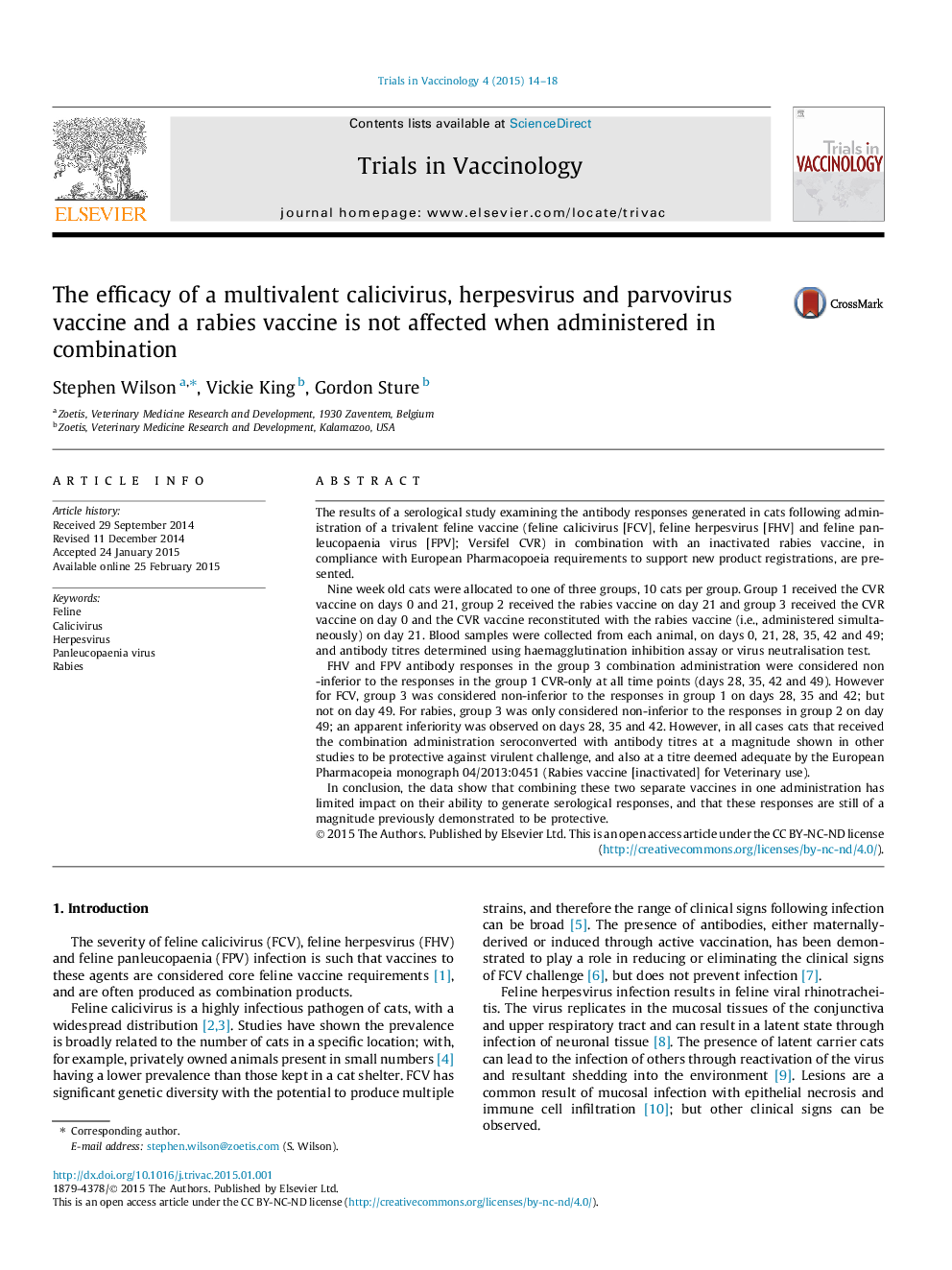| Article ID | Journal | Published Year | Pages | File Type |
|---|---|---|---|---|
| 2474368 | Trials in Vaccinology | 2015 | 5 Pages |
The results of a serological study examining the antibody responses generated in cats following administration of a trivalent feline vaccine (feline calicivirus [FCV], feline herpesvirus [FHV] and feline panleucopaenia virus [FPV]; Versifel CVR) in combination with an inactivated rabies vaccine, in compliance with European Pharmacopoeia requirements to support new product registrations, are presented.Nine week old cats were allocated to one of three groups, 10 cats per group. Group 1 received the CVR vaccine on days 0 and 21, group 2 received the rabies vaccine on day 21 and group 3 received the CVR vaccine on day 0 and the CVR vaccine reconstituted with the rabies vaccine (i.e., administered simultaneously) on day 21. Blood samples were collected from each animal, on days 0, 21, 28, 35, 42 and 49; and antibody titres determined using haemagglutination inhibition assay or virus neutralisation test.FHV and FPV antibody responses in the group 3 combination administration were considered non-inferior to the responses in the group 1 CVR-only at all time points (days 28, 35, 42 and 49). However for FCV, group 3 was considered non-inferior to the responses in group 1 on days 28, 35 and 42; but not on day 49. For rabies, group 3 was only considered non-inferior to the responses in group 2 on day 49; an apparent inferiority was observed on days 28, 35 and 42. However, in all cases cats that received the combination administration seroconverted with antibody titres at a magnitude shown in other studies to be protective against virulent challenge, and also at a titre deemed adequate by the European Pharmacopeia monograph 04/2013:0451 (Rabies vaccine [inactivated] for Veterinary use).In conclusion, the data show that combining these two separate vaccines in one administration has limited impact on their ability to generate serological responses, and that these responses are still of a magnitude previously demonstrated to be protective.
